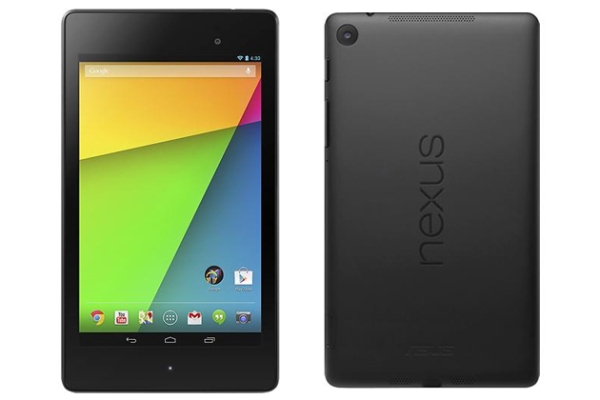Google’s newly-launched Nexus 7 2 is a tough rival to Apple’s iPad Mini – both the current model and the future one. Well, you might have gone through many comparisons between the small tablet from Apple and the Asus-made second generation Nexus 7. Even though, Nexus 7 2 is a stiff competitor to many midsize Android tablets also. Here we are taking one sample the new Samsung Galaxy Note 8 for a detailed comparison.

Display: The fresh Google Nexus tablet sports a 7-inch display, while the Galaxy Note 8 as its name suggests has a bit larger 8-inch screen. The former one mounts an LED-backlit IPS LCD display that touts a resolution of 1200 x 1920 pixels at 323-ppi.
What you have on Galaxy Note 8, at the same time, is a TFT panel that lacks in both resolution and pixels. It packs only 800 x 1280 pixels at 189-ppi. Moreover, the Google tablet has an advantage of Gorilla Glass for protecting the gadget’s screen from scratches and mild falls.
Processor, Power: It is highly important to know what specs power up a smaller tablet. Always tech makers are competing to provide the best of the processing power inside their mini tablets to attract more customers. Thus, we have a 1.5GHz Krait quad core Snapdragon S4 Pro CPU, Adreno 320 graphical card and 2GB of RAM onboard the new Nexus 7 tablet.
Of course, so competitive are the innards of the Note 8. It is powered by a 1.6GHz Cortex-A9 Exynos 4412-based processor, 2GB of RAM and Mali-400MP graphics. Talking about built-in memory, both the devices are to turn up in 16GB and 32GB models. As you can guess, the Nexus 7 2 like all other Google hardware misses microSD, while it is there with the Note 8.
Firmware: Arriving in stores in April 2013, the Note 8 has Android 4.1 JB out of the cover. Of course, once available you can update the tablet to the later versions of the software. Meanwhile, the Nexus 7 2 like all other Nexus-branded devices will debut a new Android version, which is Android 4.3 Jelly Bean, a slighter update before a major update of Android 5.0.
Cameras: It is a fact that cameras are mostly of no use on large screen tablets. But, they are as essential on midsize tablets as they are on a phablet or smartphone. Google dropped a rear camera on the first gen Nexus 7, which has only a front facing camera. This time, Google has placed a 5MP 1080p video shooting camera on its new variant of Nexus 7.
The Note 8 also has a 5MP camera apart from a 1.3MP front facing one for video chatting. Different from the Nexus 7 2, the Note’s camera can only record video at 720p. Thus, Nexus 7 2 wins the battle of cameras against the Samsung’s midsize tablet.
Dimensions: Being a 7-inch tablet, Nexus 7 2 will naturally have an edge over the Note 8 in size as well as weight. But, in body thinness, Note 8 is the winner with a body as slim as 8mm. Overall, Nexus 7 2 has 200 x 114 x 8.7mm, while Note 8 has 210.8 x 135.9 x 8 mm. In weight, the former rests at 290 grams, while the latter is heavy at 338 grams.
Connectivity: You can get both the devices in cellular/Wi-Fi combo and Wi-Fi only models. The Nexus 7 2 is 4G LTE-enabled as well. As per your preferences, you can choose a model that matches with your budget also.
Price, Availability: Price range of Galaxy Note 8 starts at $320 and its high-end model is priced at around $400. It has been in many markets across world since April 2013. The Nexus 7 2’s price range starts at $229 and its premium 32GB model is priced at $259. It is yet to make its rally to stores, however.


